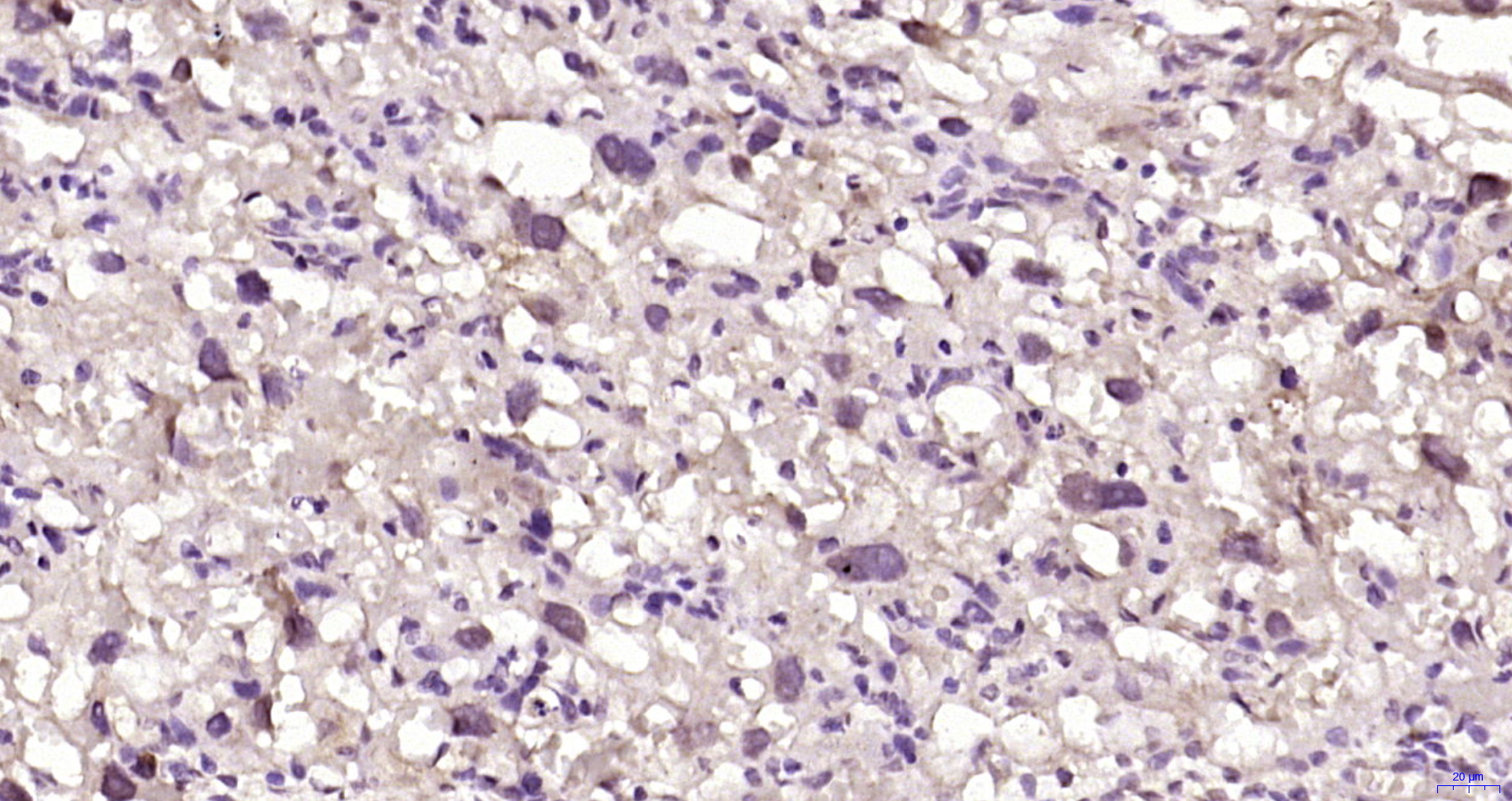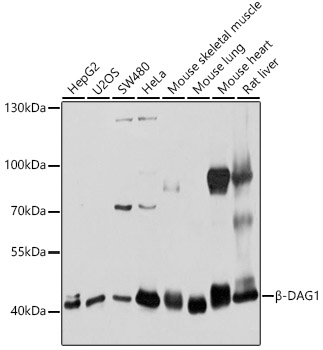DAG1 antibody
GTX105038
ApplicationsImmunoFluorescence, Western Blot, ImmunoCytoChemistry, ImmunoHistoChemistry, ImmunoHistoChemistry Paraffin
Product group Antibodies
ReactivityEquine, Human, Mouse, Rat
TargetDAG1
Overview
- SupplierGeneTex
- Product NameDAG1 antibody
- Delivery Days Customer9
- Application Supplier NoteWB: 1:500-1:3000. ICC/IF: 1:100-1:1000. IHC-P: 1:100-1:1000. *Optimal dilutions/concentrations should be determined by the researcher.Not tested in other applications.
- ApplicationsImmunoFluorescence, Western Blot, ImmunoCytoChemistry, ImmunoHistoChemistry, ImmunoHistoChemistry Paraffin
- CertificationResearch Use Only
- ClonalityPolyclonal
- Concentration1.28 mg/ml
- ConjugateUnconjugated
- Gene ID1605
- Target nameDAG1
- Target descriptiondystroglycan 1
- Target synonyms156DAG, A3a, AGRNR, DAG, LGMDR16, MDDGA9, MDDGC7, MDDGC9, dystroglycan 1, dystroglycan 1 (dystrophin-associated glycoprotein 1)
- HostRabbit
- IsotypeIgG
- Protein IDQ14118
- Protein NameDystroglycan 1
- Scientific DescriptionDystroglycan is a laminin binding component of the dystrophin-glycoprotein complex which provides a linkage between the subsarcolemmal cytoskeleton and the extracellular matrix. Dystroglycan 1 is a candidate gene for the site of the mutation in autosomal recessive muscular dystrophies. The dramatic reduction of dystroglycan 1 in Duchenne muscular dystrophy leads to a loss of linkage between the sarcolemma and extracellular matrix, rendering muscle fibers more susceptible to necrosis. Dystroglycan also functions as dual receptor for agrin and laminin-2 in the Schwann cell membrane. The muscle and nonmuscle isoforms of dystroglycan differ by carbohydrate moieties but not protein sequence. [provided by RefSeq]
- ReactivityEquine, Human, Mouse, Rat
- Storage Instruction-20°C or -80°C,2°C to 8°C
- UNSPSC12352203
References
- Riemersma M, Mandel H, van Beusekom E, et al. Absence of α- and β-dystroglycan is associated with Walker-Warburg syndrome. Neurology. 2015,84(21):2177-82. doi: 10.1212/WNL.0000000000001615Read this paper
- Riemersma M, Sandrock J, Boltje TJ, et al. Disease mutations in CMP-sialic acid transporter SLC35A1 result in abnormal α-dystroglycan O-mannosylation, independent from sialic acid. Hum Mol Genet. 2015,24(8):2241-6. doi: 10.1093/hmg/ddu742Read this paper
- Donadeu FX, Fahiminiya S, Esteves CL, et al. Transcriptome profiling of granulosa and theca cells during dominant follicle development in the horse. Biol Reprod. 2014,91(5):111. doi: 10.1095/biolreprod.114.118943Read this paper
- Jae LT, Raaben M, Herbert AS, et al. Virus entry. Lassa virus entry requires a trigger-induced receptor switch. Science. 2014,344(6191):1506-10. doi: 10.1126/science.1252480Read this paper






![IHC-Fr analysis of human skeletal muscle using GTX01940 DAG1 / beta Dystroglycan antibody [43DAG1/8D5]. Staining is localized in the sarcolemma of the fibers.](https://www.genetex.com/upload/website/prouct_img/normal/GTX01940/GTX01940_20200811_IHC-Fr_106_w_23053121_152.webp)
